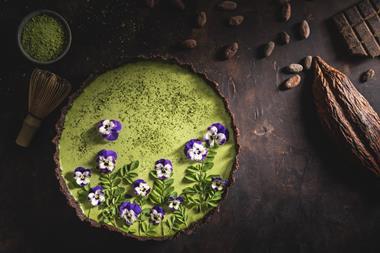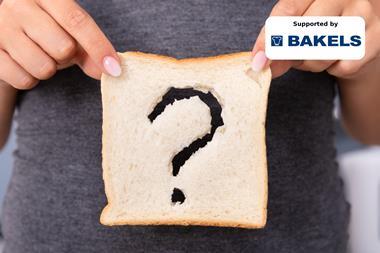Spelt and quinoa are now commonplace in the baking industry, but there are a myriad of lesser-known ancient grains waiting to be discovered.
All the best things eventually come back into culinary favour: Angel Delight, prawn cocktail and, of course, the pharaohs’ beloved ancient grains.
The latter have been a driving force in bakery innovation in recent years, thanks to consumer interest in wholegrains, their nutritional properties and low gluten content.
Bakery product launches containing specified ancient grains have increased significantly, according to analyst Mintel, with bakery NPD containing buckwheat, spelt and quinoa up by 143%, 50% and 50% respectively in the past two years.
There are also lesser-known grains that have yet to gain the sort of favour enjoyed by the likes of buckwheat and quinoa, presenting plenty of opportunity for bakers. However, encouraging consumers to embrace teff, kamut and even fonio requires an education process.
US-based Oldways Whole Grains Council conducted a consumer survey of 1,500 adults this August to determine which grains consumers had heard of and eaten. Quinoa, unsurprisingly, topped the list, followed by buckwheat, millet, sorghum, and farro. Lesser known were spelt, amaranth, Kamut, teff, and fonio.
Zeelandia is among the ingredients suppliers that are tapping interest in more unusual ancient grains, with a softened seed and grain offering that features teff, sorghum, einkorn, kamut and Grünkern – a form of spelt harvested when semi-ripe. The latter, notes Zeelandia’s national sales manager Richard Hazeldine, is seeing a resurgence in Germany and is trickling down into Switzerland, the Netherlands, Belgium and Italy.
“With these other grains and seeds it is more usual to blend different varieties together,” he adds.
CSM Bakery Solutions last year refreshed its Pantique Ancient Grains bread mix, which it claims is the only one in the UK to contain einkorn (which dates back to 10,000BC) and emmer (known as the pharaohs’ wheat).
Ingredients supplier Edme says demand for its ancient grain flours and flakes has “grown enormously” in the past two years, as has demand for blends, leading it to introduce a range of mixes which include buckwheat flakes, kibbled spelt and millet seeds.
There are significant benefits to embracing the trend, but they can come at a financial cost.
“The sourcing costs of ancient cereals are significantly higher,” says Michael Gusko, managing director of German-based flour producer GoodMills Innovation. “In order to keep the price of end-products affordable, many bakers only add a small proportion of ancient grain to their recipes.”
Stephen Craggs, managing director of commercial spelt producer Craggs & Co, elaborates on the limitations and restrictions on supplying ancient grains in bulk. “It’s no secret that ancient grains are tricky to grow (particularly ensuring a high protein content),” he says. “It only yields approximately 1.5 tons of usable grain per acre – in comparison with approximately four tons an acre for traditional milling wheat.
“In addition, with all ancient grains there is between 40-50% waste, due to its protective hull which needs removing to release the grain.”
Bakers can recoup some of this cost as consumers become increasingly willing to splash out on bread and other baked goods containing ancient grains.
“Ancient grains can help to increase sales and profit for the baker,” says Miriam Bernhart, European product marketing director for bread ingredients at CSM. “Consumers expect to pay up to 50% more for ancient grains bread than standard bread, making the mix a key sales driver.”
Tasneem Backhouse, joint managing director at EHL Ingredients, advises bakers to use a selection of grains in their products to differentiate themselves in the marketplace – for example in pizza bases, loaves and rolls, wraps and pittas, crackers, as well as cookies, biscuits and flapjacks.
Getting the recipe right can take trial and error.
“When used as grain flours, bakers can usually use the same quantities they would use of standard flour, but it’s also worthwhile replacing part of the all-purpose flour with an ancient grain flour and experimenting with the results to find the desirable taste, texture and appearance,” she says.
Each grain can bring its own unique flavour profile to that of a baked good. “Teff, for example, has an earthy, nutty flavour, while kamut may work better in sweet, buttery bakery items, such as scones and cinnamon loaves,” adds Backhouse.
CSM says einkorn brings a unique nutty quality to the mix, and emmer has a spicy flavour. Grünkern, supplied by Zeelandia, is said to have a slightly sweet taste as well as a smoky flavour, as the traditional way to dry the grain is to smoke it over beech wood.
The health properties of ancient grains shouldn’t be overlooked when it comes to marketing, though – particularly as they can make indulgent treats seem more permissible to consumers.
“In bakery, the perceived benefits of such ingredients seem to counterbalance negative perceptions on carbohydrate, calories or sugar content,” says Amy Price, senior food and drink analyst at Mintel.
With benefits like that, these forgotten ancient grains could well become modern-day staples.
In pursuit of a new opportunity
Sprouted grains have been touted as the next big thing in bakery in recent years and it seems the trend has started to take root.
“Sprouted grains are gaining traction; we have seen growth of almost 300% over the past
12 months,” says Richard Hazeldine, national sales manager, Zeelandia. “Retailers are incorporating sprouted grains into their seeded breads, but it remains to be seen whether the larger plant bakers will follow suit.”
Tesco, for example, stocks own-label sprouted grain rolls made with sprouted spelt, malted wheat flakes, oats, barley and wheat bran. And Ocado’s range includes Sprouted Genius Amaranth Crackers and Biona Organic Yeast Free Vitality Rye Bread with Sprouted Seeds. Planet Organic also stocks a range of Everfresh breads in the UK, including a Sourdough Rye Bread with Sprouted Rye Grains and Mixed Seeds.
The trend has already taken off in the US – so much so that members of the Oldways Whole Grains Council created a working group in 2015 to explore standards, definitions and sprouting practices.
However, there are still barriers when it comes to getting Brits to tuck in.
“For sprouted grains, there is some interest, with 35% of Britons saying they would be likely to buy bread or baked goods with sprouted grains,” explains Mintel senior food and drink analyst Amy Price. “A lack of understanding on the perceived benefits could be holding usage back here.”
Even though sprouted grains have grown in popularity, they still remain niche, according to GoodMills Innovation managing director Michael Gusko.
“Sprouted grains cater less to the target audience of ancient grains,” he says. “Sprouted grains tap completely into the world of healthy eating.”
That’s not the only thing. Zeelandia’s Hazeldine notes that the availability of sprouted grains has been “somewhat limited”, which puts them outside of the reach of smaller bakers.
However, he believes Zeelandia’s Silkgrain Vital range – sprouted versions of the company’s Silkgrain range of softened seeds and grains – could help with this. The products are softened and stabilised using a natural sourdough derived from the same grain, so sprouted rye will be softened and stabilised using a rye sourdough, oats in an oat sourdough and so on.
“The benefit to bakers is ease of use,” says Hazeldine. “The seeds and grains are already softened and come in 5kg pouches. Bakers can soften seeds and grains themselves, but it is time-consuming, and there are microbiological risks.”
Guide to ancient grains
1. Amaranth: A staple of the Aztec culture, amaranth is making its way onto the market thanks to its peppery taste and higher level of protein than other grains (it is roughly 13-14% protein). It has no gluten, so must be mixed with wheat to make leavened breads.
2. Buckwheat: Technically not a grain, buckwheat is the cousin of rhubarb. But its nutrients and nutty flavour have led to it being adopted into the grains family. It tolerates poor soil and grows well on rocky hillsides.
3. Einkorn: Einkorn is thought to be one of the most ancient wheat varieties available today. It is grown in marginally fertile areas, and some US farmers are bringing the drought-tolerant crop back into production. Studies show that, compared to modern wheat, it is higher in protein, phosphorus, potassium and beta-carotene, among other nutrients.
4. Emmer: Also known as farro, this ancient strain of wheat was one of the first cereals to be domesticated and was served as a daily ration to the Roman legions. But by the beginning of the 20th century, it had been widely replaced by higher-yielding wheat strains.
5. Fonio: Fonio is a type of millet – a family of small-seeded grains from several different genera of the grass family Poaceae. Others include pearl, foxtail, proso and finger. Although one of the least commonly cultivated millets, fonio’s versatility means it can be used in products including desserts and porridge.
6. Kamut: Heirloom grain Kamut Khorasan is believed to have been brought back as a souvenir from an Egyptian tomb and peddled at the Montana State Fair in the 1960s as King Tut’s wheat. Today, millions of pounds of this buttery-tasting wheat are grown.
7. Quinoa: Quinoa originates from the Andes, where it has long been cultivated by the Incas. It is a small, light-coloured round grain, but also comes in red, purple and black variants.
8. Sorghum: Sorghum thrives where other crops would wither and die – even becoming partially dormant during drought periods. The gluten-free grain can be eaten like popcorn, ground into flour for baked goods or used in brewing.
9. Spelt: Spelt was widely cultivated until the spread of fertilisers and mechanical harvesting left it by the wayside in favour of other wheats. Notably, it is higher in protein than common wheat, which it can be used to replace.
10. Teff: Teff grains are minute, about 1/150th the size of wheat kernels. The nutritious and easy-to-grow type of millet is gaining attention for its sweet, molasses-like flavour and versatility. It grows in three colours: red, brown and white.
Source: Oldways Whole Grains Council. For more details visit www.wholegrainscouncil.org.





























No comments yet